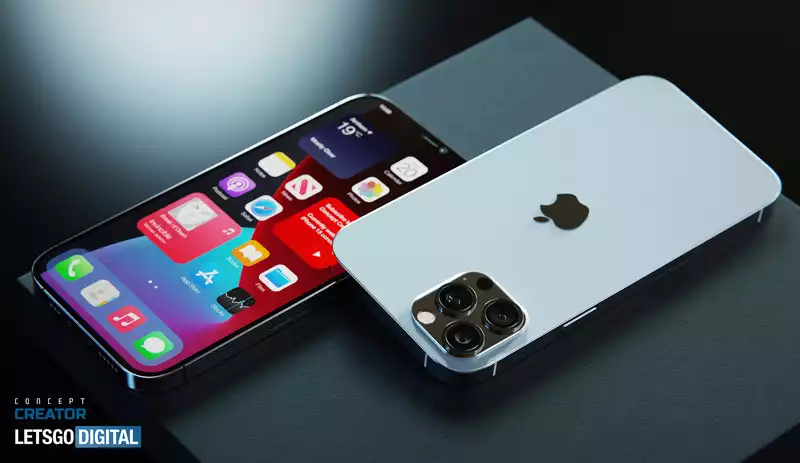Update: Another analyst predicts that the iPhone 14 Pro and Pro Max will feature a 48MP wide-angle camera lens and 8GB of RAM.
According to the latest rumors, the iPhone 14 will have a significantly redesigned main camera and body design.
Not only will the Pro model have a 48MP camera, but the entire series will be divided into two new 6.1" models and two 6.7" models. It will be interesting to hear about Apple's future direction so soon, although it may still be more than a year away, as the iPhone 13 will be introduced before then.
The details come from Apple oracle and analyst Ming-Chi Kuo in an investor note seen by MacRumors. Kuo is familiar with Apple's supply chain in Asia and has a good grasp of which components will go into future Apple products.
Apple has been using a 12MP rear camera since the iPhone 6S in 2015, but the size of the sensor is regularly updated. 48MP sensors allow the iPhone 14 to produce brighter images using "pixel binning." In this photo mode, information from four adjacent pixels is combined into a single "superpixel," resulting in a 12MP image.
For video, the new sensor could allow the iPhone to record in 8K for the first time. This would be especially beneficial for AR/VR applications, Kuo explained, and sounds like another step in Apple's strategy to eventually launch the Apple mixed reality headset and Apple Glasses.
Kuo is clearly excited about the potential of this new camera. He writes in his report that "the camera quality of the new 2H22 iPhone will take cell phone camera photography to a new level." The "2H22" here refers to the second half of 2022, when the iPhone 14 is expected to launch; it will be interesting to see how the images taken by the iPhone 14 Pro will look compared to the iPhone 12 and the iPhone 13, which is expected to launch this year.
The change in size options for the iPhone 14 to only 6.1" and 6.7" is not surprising considering how poorly the 5.4" iPhone 12 mini sold compared to its siblings.
Apple is said to be dropping the smallest size, but according to Kuo, it will still stick with its current split of two base models and two higher-spec models. In other words, assuming Apple sticks to its current naming convention, there will be Basic, Pro, Max, and Pro Max versions of the iPhone 14.
Based on earlier rumors by Kuo, another major change for the iPhone 14 is the elimination of the notch. Perhaps the most distinctive feature of recent iPhones, Kuo claims that the notch will be replaced by a punch-hole notch in 2022, meaning that the iPhone will be more similar to current Android phones, with less amount of screen to sacrifice to place the front camera This means that the iPhone will be more like current Android phones, with less screen to be sacrificed to place the front camera.
Looking further ahead than the iPhone 14, Kuo reiterated his earlier claim that the 2023 iPhone will feature Apple's first periscope telephoto camera, Face ID under the display, and possibly a model with Touch ID under the display. He reiterated.
Face ID under the display would see the end of the notch, which is already predicted to shrink with the iPhone 13. It would give a major design overhaul to the iPhone's overall aesthetic.
Leaker Ice Universe shared iPhone 14 camera information similar to what Kuo reported. However, they also gave some details on how this will likely compare to the upcoming Samsung phone that references the Samsung Galaxy S22. Unfortunately for Samsung, IU does not see this battle going in their favor.
First, IU stated that Samsung will continue to use the 108MP main camera. Samsung has been using 108MP main cameras in its phones since last year, including the Galaxy S20 Ultra, Galaxy Note 20 Ultra, and most recently the Galaxy S21 Ultra, which features a new generation of this sensor.
All of these models have appeared in the Best Camera Phones guide after noon, but have never broken the top spot that the iPhone has always held. The reason for this, Ice Universe suggested, is that Samsung is pursuing camera resolution rather than sensor size, and will continue this "wrong direction" in the future.
While we often talk about cameras primarily in terms of resolution (how many megapixels), another important factor is the overall size of the sensor. The smaller the pixel count, the more pixels can fit onto a smaller sensor. The more pixels, the more detail the camera can capture. However, smaller pixels struggle to capture light and the image may be darker and less clear.
The 108MP Samsung camera has a higher resolution than the 48MP iPhone camera, but IU states that the iPhone's sensor has a larger footprint. This will likely allow Apple to maintain its advantage in photography for some time to come.
Based on Apple's recent announcements, the iPhone 14 should arrive around fall 2022; the Galaxy S22 will arrive earlier, probably in early 2022, and Apple's iPhone 13 will probably arrive this September.
.









Comments